The full article has now gone live at Positive Feedback HERE. Enjoy!
I always enjoy providing you a 'sneak peek' of my upcoming feature articles for Positive Feedback.
This time I am sharing with you a preview of "The Audio Note (UK) Io I MC Phono Cartridge, AN-S4 Step-Up Transformer, AN-V Silver Interconnects, and AN-SPe Silver Loudspeaker Cables: An ‘out of this world’ listening experience!" feature article that will be published in the near future.
Enjoy!
My highlight of 2019 was visiting with Peter Qvortrup and the Audio Note (UK) ‘family’ in Brighton, England.
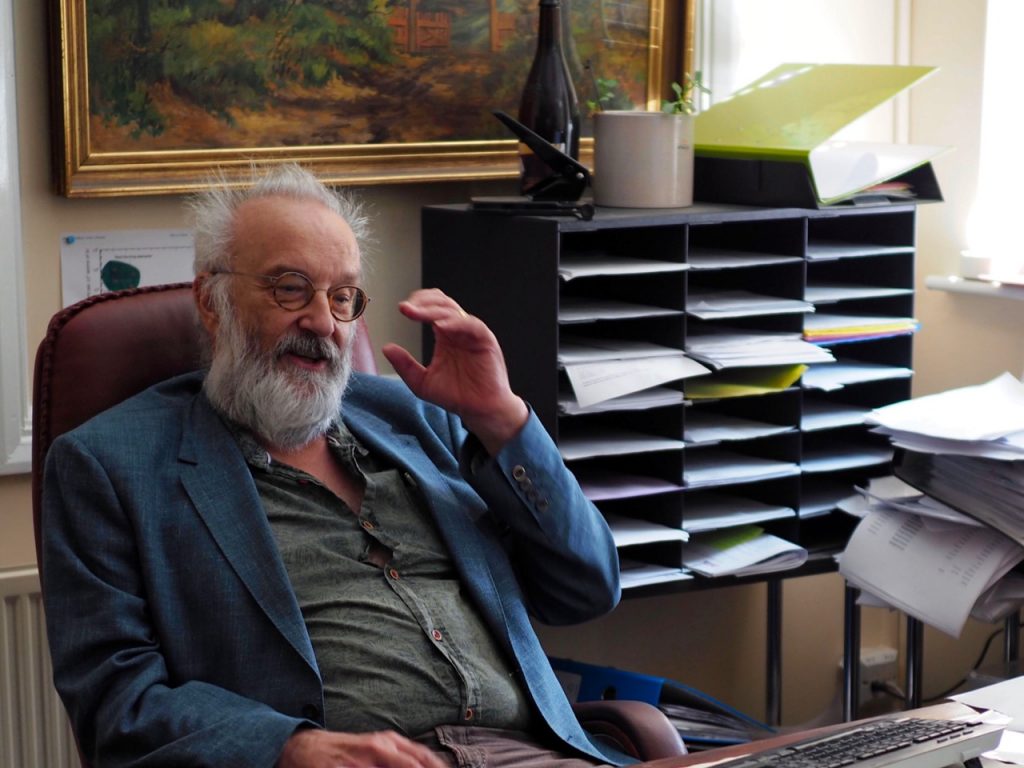
Peter Qvortrup, Audio Note (UK).
Meeting Peter Qvortrup, Daniel Qvortrup (Peter’s son), Andy Grove, and Darko Greguras was a real treat.

Daniel Qvortrup, Audio Note UK.
Peter and Daniel walked me through the Audio Note (UK) operation, and told me about some of the exciting concepts and products they've been working on developing, and we had an enjoyable listening session at Peter's home - with both vinyl and digital sources - on Peter’s cutting-edge Audio Note (UK) system.
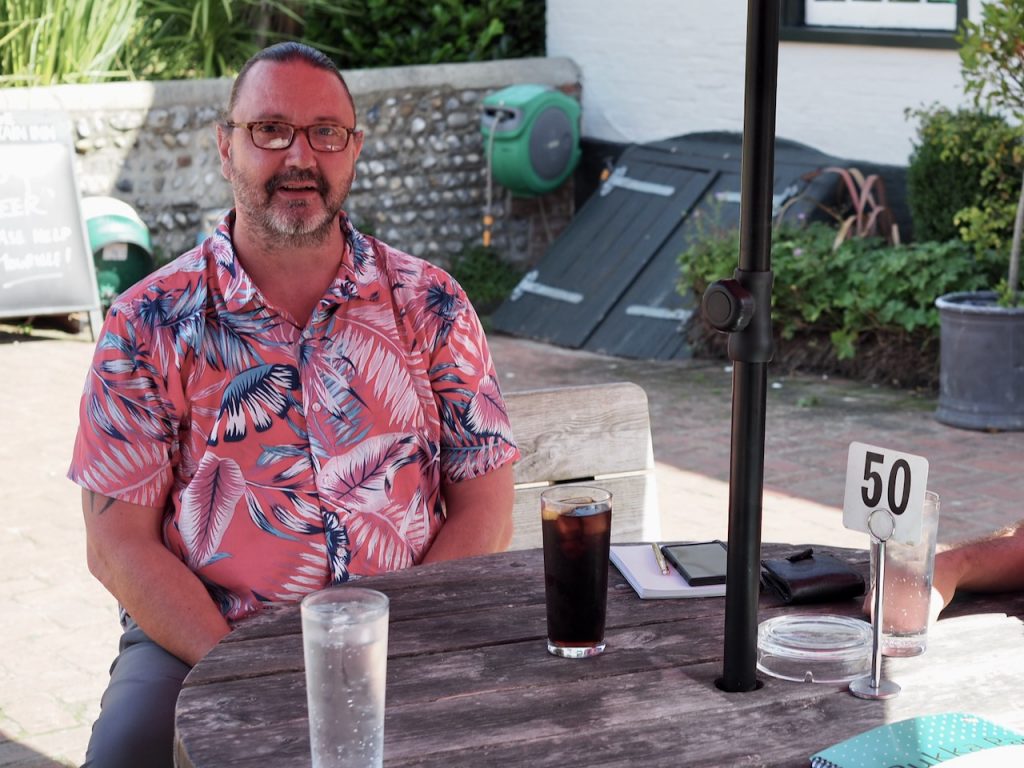
Andy Grove, Audio Note (UK).
I also had an enjoyable and informative time listening to Andy Grove and Darko Greguras talk about the audio R&D taking place at Audio Note (UK). They are working on some truly exciting projects, and their ideas are beyond the current state-of-art in audio, which bodes well for the future of high-performance audio.
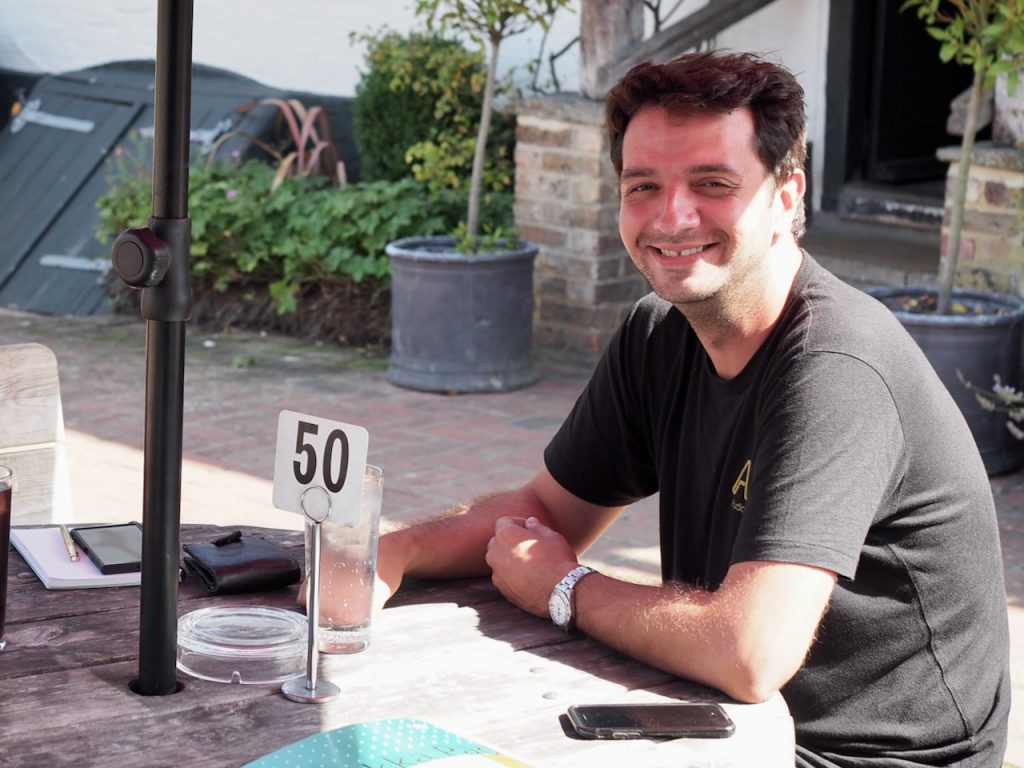
Darko Greguras, Audio Note (UK).
Listening to music with Peter at his home was illuminating, as Peter loves to listen to a wide variety of music from all of the recording eras of our historic recorded music canon, so that means utilizing sources for both analog and digital media to accomplish that goal.
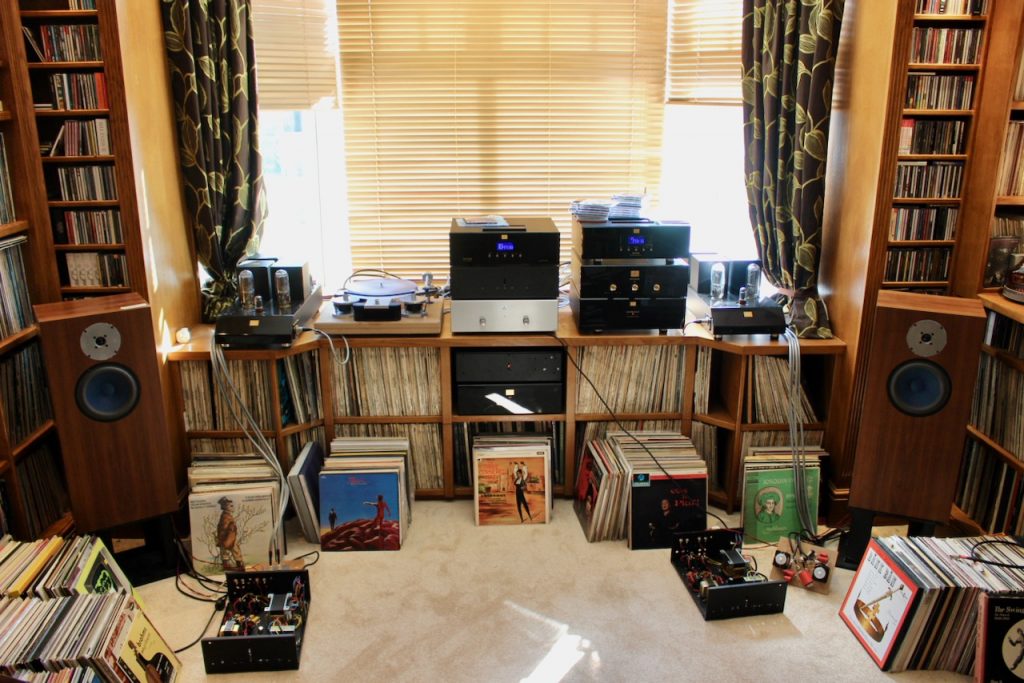
Peter's home listening room.
Peter introduced me to 78 transfers from the acoustic (1877-1925) and electric (1925-1945) eras of recording made by his late friend, Anatoly Markovich Likhnitsky, using Anatoly’s specialty “RX corrector” that provides a “controlled correction of frequency response” of 78 rpm records that utilizes transformers to provide an equalization curve (in a fashion of similar concept to that of the Audio Note (UK) M9 phono preamplifier).
I was immediately smitten by the superb transfers and the sublime musical performances on those discs, underscoring the tremendous importance to music lovers of having an audio system that can turn recordings from all of our historic eras of recording into engaging musical performances.
Peter also introduced me to the Audio Note (UK) ‘Performance Level System’ that articulates the level of sophistication and refinement of Audio Note (UK) component designs as a system of seven “levels’ of performance, from the entry “Level Zero” components through the state-of-art “Level Six” components.
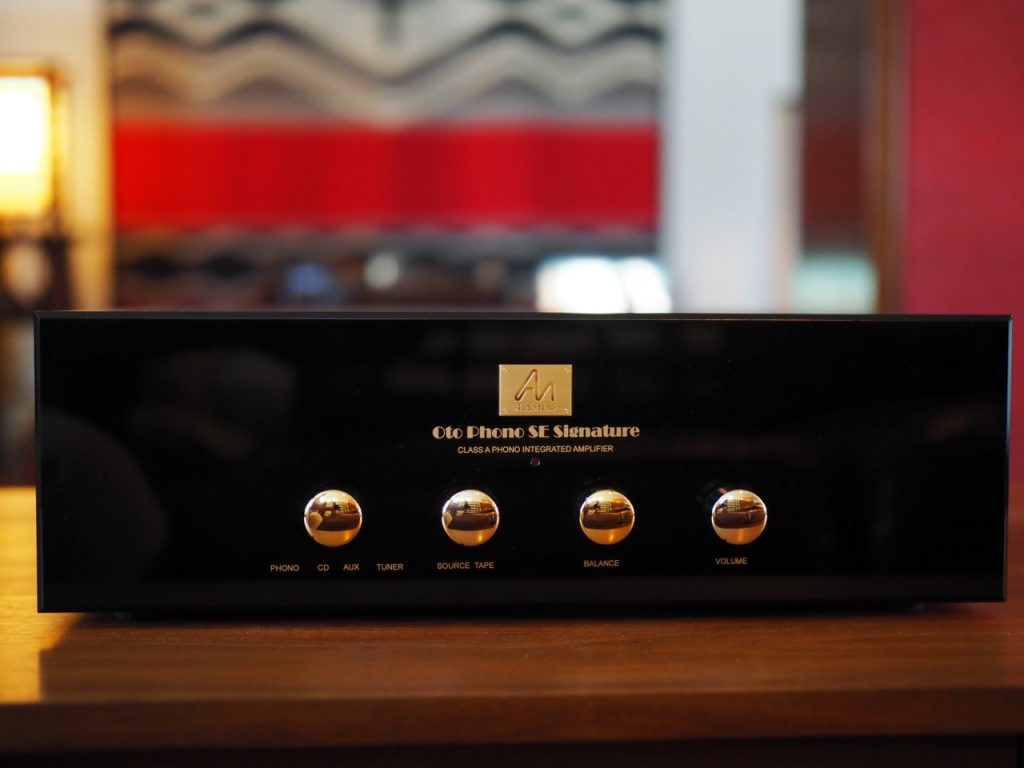
Audio Note (UK) Oto Phono SE Signature integrated amplifier.
I’ve listened extensively to the ‘Level Two’ Audio Note (UK) Oto Phono SE Signature integrated amplifier (HERE), and the ‘Level Two’ Audio Note (UK) CD 2.1x/II Red Book CD player (HERE), and they possess an impressive combination of musicality and sound quality that I’ve found to be dangerously addictive.
The Audio Note (UK) CD 2.1x/II Red Book CD player, in particular, turned out to be an audio life-changing component for my music listening sessions. Its ability to turn CD transfers of musical performances from all of the recording eras into exciting and engaging listening experiences has been a real ear-opener, and has significantly broadened my listening interests for the better.

Audio Note (UK) CD 2.1x/II Level Two Red Book CD Player.
As a result, I’ve experienced immense enjoyment listening to CDs, and in particular, I’ve got hooked on listening to 78 rpm record transfers to CDs of magnificent musical performances from the acoustic and electric eras of recording, which I have been exploring with great enthusiasm.
In fact, I’m so impressed with the musical performances I’ve heard on 78 transfers that I’ve started a regular series of posts about them at Jeff’s Place, “The 78 Experience - Feeling The Music”, to introduce all of you to their considerable charms.
Peter also introduced me to his Audio Note (UK) philosophy of the importance of complete system design synergy - from source to loudspeakers - for getting the highest level of performance possible from an audio system.
To introduce me to his ‘complete system design synergy’ Peter has been adding in components one by one for me to listen to to create an Audio Note (UK) ‘near full system experience’ to write about for you.
First was the Audio Note (UK) Oto Phono SE Signature integrated amplifier, followed by the Audio Note (UK) CD 2.1x/II Red Book CD player, and then the combination of the Audio Note (UK) Io I MC phono cartridge (Level Three), the AN-S4L silver step-up transformer (Level Four), AN-V silver interconnects (Level Three), and AN-SPe silver loudspeaker cables (Level Four).
Just as the Audio Note (UK) CD 2.1x/II Red Book CD player served as an introduction to an Audio Note (UK) Level Two high-performance digital source, this article introduces the Audio Note (UK) Io I MC phono cartridge (Level Three) and AN-S4 step-up transformer (Level Four), which serves as an introduction to an Audio Note (UK) high-performance analog source.
The AN-V silver interconnects (Level Three) and AN-SPe silver loudspeaker cables (Level Four), provides an introduction to Audio Note (UK)’s performance upgrade path of silver cabling.
I’ve done quite a lot of preliminary listening with the Audio Note (UK) Io I MC phono cartridge, as it served as the primary phono cartridge for my article about the Pass Labs XP-17 phono stage (HERE), and in combination with the AN-S4 step-up transformer for my articles about the Sophia Electric 45 triode vacuum tubes (HERE) and Triode Lab 45 EVO singled-ended-triode integrated amplifier (HERE). If you’ve read those articles, you know I’m really impressed with the performance of the Audio Note (UK) Io I MC phono cartridge and AN-S4 step-up transformer.
Audio Note (UK) Io I MC Level Three Phono Cartridge ($5,028.48 USD)
The Io moving-coil phonograph cartridge design was developed by Kondo-san of Audio Note (Japan) in 1979. The Io was offered to customers as a high-performance moving-coil phonograph cartridge, and was a limited production item with about 40 - 50 cartridges being produced per year.
In 1990 Audio Note (Japan) transferred the license for producing the Io cartridge to Audio Note (UK), who began manufacturing, and then delivering, the Io moving-coil phonograph cartridges in greater numbers to satisfy customer demand.
There are four versions of the Io moving-coil phonograph cartridge available, the Io I (Level Three), the Io II (Level Four), the Io Gold (Level Five), and the Io Limited (Level Six), with each higher level providing enhanced performance compared to the level preceding it.
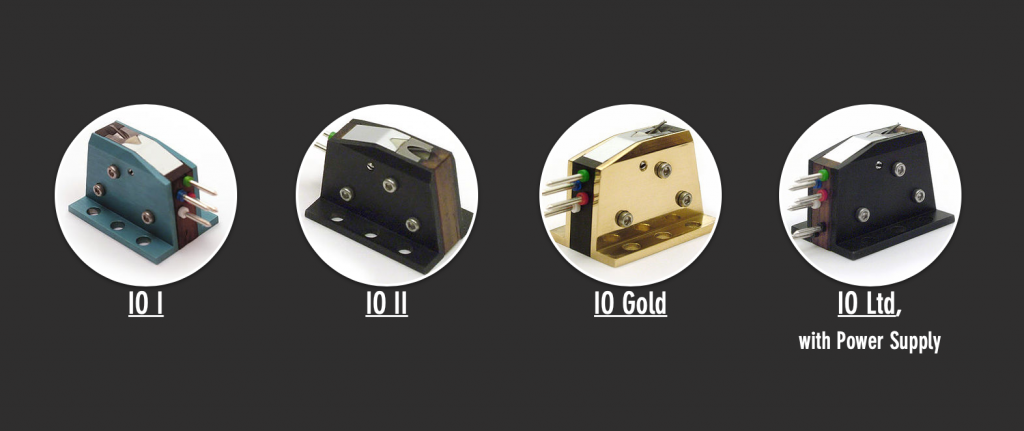
Audio Note (UK) range of Io moving-coil phonograph cartridges.
There are seven primary foci of consideration in the Io cartridge design, (1) the generator principle, (2) the mechanical integrity of body, (3) the magnetic circuit and magnet choice, (4) the wire material and quality, (5) the cantilever material, shape and length, (6) the damping, and the stylus choice (7).
The Io I cartridge that is the subject of this article represents the baseline design of the Io range of cartridges, and as one goes up through the range from the Io I, Io II, Io Gold, and Io Limited, each ascending model includes performance enhancing refinements to the baseline design.
The generator principle (1) chosen for the Io cartridge design is the moving-coil generator, as it provides “greater linearity in terms of electrical output from the mechanical movements of the stylus …”.
A moving-coil generator produces an electrical output as the coils are moved in a magnetic field by the stylus as it navigates a record groove’s encoded signal information.
To maximize the transmission of signal information in the electrical output from the mechanical movement of the stylus, the Io’s body (2) employs high-rigidity and structural strength to provide a non-resonant platform that minimizes any signal losses due to vibrations or resonances within the body of the cartridge.
The body of the Io consists of metal side cheeks, the front and back of the body is wood, with the internal metal parts being made of Swedish steel (a very high quality steel), all of which which are fastened together with screws torqued to a particular value to minimize signal degrading vibration via a constrained-layer damping approach.
The internal space in the Io is taken up by the Alnico magnets and the pole pieces, so the Io is nearly a solid piece of metal.
The side plate material for the Io I is aircraft grade aluminum, and for the Io II, Io Gold, and Io Limited the side plate material is “gunmetal”, an alloy of copper, tin, and zinc.
For the magnetic circuit (3), the Io I and Io II share the same Alnico magnets and Swedish steel metal parts. The Io Gold utilizes Alnico magnets, but with the pole pieces being made of Permendur, a super low-loss magnetic focusing alloy, which is shaped to focus the magnetic field where it is most needed. The Io Limited utilizes a field coil for the magnetic circuit, and requires a separate DC power supply.
The wire (4) used in the Io cartridge coils is 99.99% pure silver. Audio Note (UK) buys large quantities of silver in bulk, and all of the wire is custom drawn to the specific gauge requirements for the application. The Io cartridges utilize 0.05 mm 99.9% silver wire with a polyurethane coating, low coil turns, and internal shielding, to maximize transmission of signal information. You can see a photo of the coils below.

Silver coils in the Io moving-coil phonograph cartridges.
The Io phono cartridges utilize a titanium cantilever (5). About the titanium cantilever, Audio Note (UK) says:
“It is on the design and construction of the cantilever that much of the quality of a cartridge depends. Many materials were investigated, Boron, Beryllium, Sapphire. Diamond and Titanium and all except Titanium were disregarded in the final analysis, due to deficiencies in one or more areas. It is vitally important for the cantilever in the stylus assembly to be as rigid as possible, in order to accurately transfer the stylus motion to the coil assembly without adding any unwanted vibration as a result of flexing or bending.”
“The optimum material here, was found to be an extra thick walled tapered Titanium tube, the taper being both outside AND inside, since this affords by far the greatest rigidity, despite the fact that Boron offers some theoretical advantages, but these cannot be realized in practice, mainly due to current production techniques.”
“It was further found that by using this type of Titanium cantilever, its greater rigidity made the use of a longer cantilever possible. This greatly reduces cantilever excursions on heavily modulated records, which offers three advantages:”
“It is easier for the stylus to track complex, highly modulated grooves. The resultant smaller coil movement reduces the un-linearities in the magnet field, where the field will "bend" less.
Damping can be reduced, as it becomes easier to control stylus movement.
All the above points help reduce distortions and un-linearities introduced by the cartridge during playback.”
For damping (6), the Audio Note (UK) Io utilizes a butyl rubber damper, about which Audio Note (UK) says:
“As mentioned above, damping of the cantilever is extremely critical. Too much and the cartridge will sound dull, because a lot of the critical energy from the record will be absorbed in the damper instead of reaching the coils, and thereby reducing the efficiency of the vibrational energy transfer from the record as electrical energy in the cartridge. Conversely, too little damping will make the cantilever prone to uncontrolled excursions, resulting in unwanted distortions and poor tracking.”
“Much experimentation led to a precision Butyl rubber damper, offering a wide operating temperature range and minimal hysteresis effects. The tension on the damper is furthermore adjustable, allowing very accurate set-up of each cartridge's individual suspension.”
The Io phonograph cartridge uses an Audio Note (UK) Type 2 diamond stylus (7).
“Finally the assembly is completed with the use of a solid diamond stylus, an Audio Note (UK) Type 2. the main advantages this design offers are described in a separate paragraph, but can briefly be described thus: better tracking of high frequency, lower surface noise, lower record wear, longer stylus life, smaller tip mass and lower tracking force.”
“The stylus is first "pinched" into place by the cantilever and then glued. using a single component epoxy resin, which needs "baking" for about three hours to harden.”

Audio Note (UK) Io I moving-coil phonograph cartridge.
The Io I that is the subject of this article (owner’s manual HERE) is the baseline offering in the high-performance Io product line, and features the above-mentioned design elements, has an output voltage of 0.04mV, an internal impedance of 1 Ohm, a matching impedance of 3 - 4 Ohms, a frequency range of 10Hz - 50kHz, a recommended 2.5g of stylus pressure, and is available with either a red or blue body.
Audio Note (UK) offers an affordable cartridge rebuilding service so that owners can continue to enjoy their investment in an Io moving-coil phonograph cartridge for years into the future.
In case you are curious, the “Io” name of the cartridges is in recognition of the titanium cantilevers used in the design. The phonograph cartridges are named after the thriller science fiction movie Outland (originally titled Io) starring Sean Connery, about a titanium mining operation on Jupiter’s fifth moon, Io.
Yes, the implication is that the Io phonograph cartridges provide an ‘out of this world’ analog listening experience!
Audio Note (UK) AN-S4L Level Four Step-Up Transformer ($7,542.72 USD)
The Audio Note (UK) Io I moving-coil phonograph cartridge has a very low output of 0.04mV, so it requires the use of a step-up transformer for matching it to an Audio Note (UK) phono preamplifier to achieve adequate volume levels.
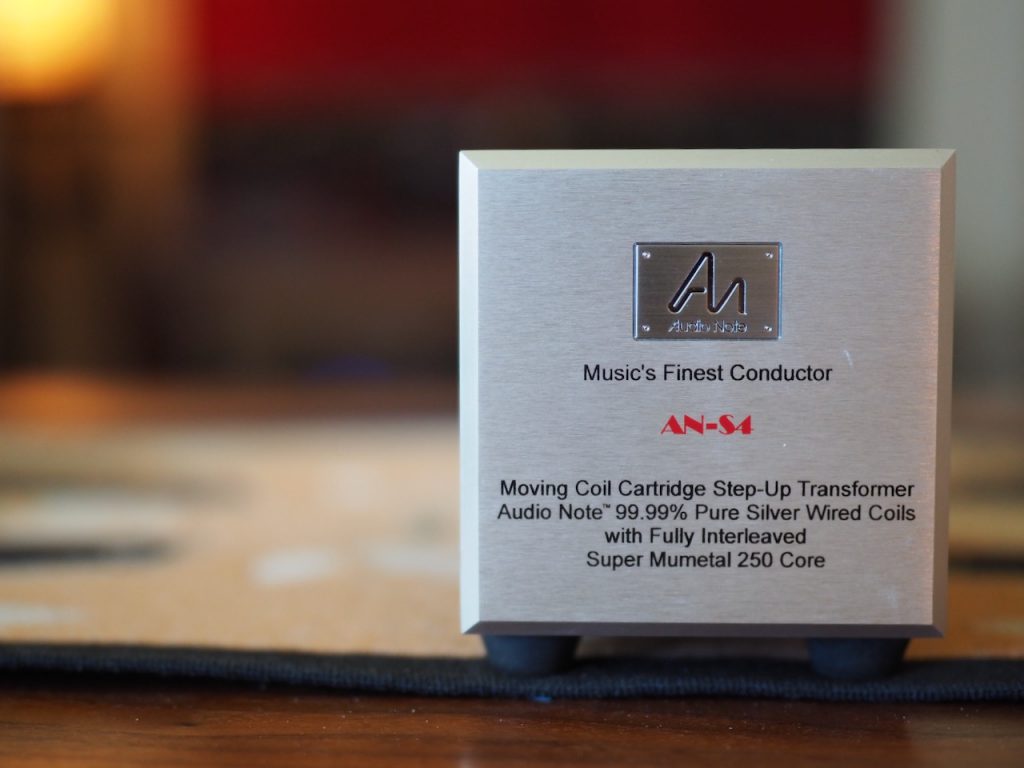
Audio Note (UK) AN-S4 step-up transformer (SUT).
The AN-S4L step-up transformer (more HERE) is a passive device that steps-up the very low voltage output of the Io I phonograph cartridge so that adequate volume levels can be achieved through a phono preamplifier.
The AN-S4L is a Level Four step-up transformer, and is the first silver-wired step-up transformer in the Audio Note (UK) step-up transformers product line.
Audio Note (UK) has specific transformer design philosophy goals that you can read about HERE. While the link describes Audio Note (UK) amplifier transformers, the same sorts of design principles also applies to step-up transformers.
The internal transformers used in the AN-S4L are manufactured by Audio Note (UK), with each transformer having an interleaved 0.1mm laminated super mumetal 250 core that has primary and secondary windings wound with 99.99% pure silver wire, with each transformer enclosed in a mumetal screening canister to minimize noise and interference.
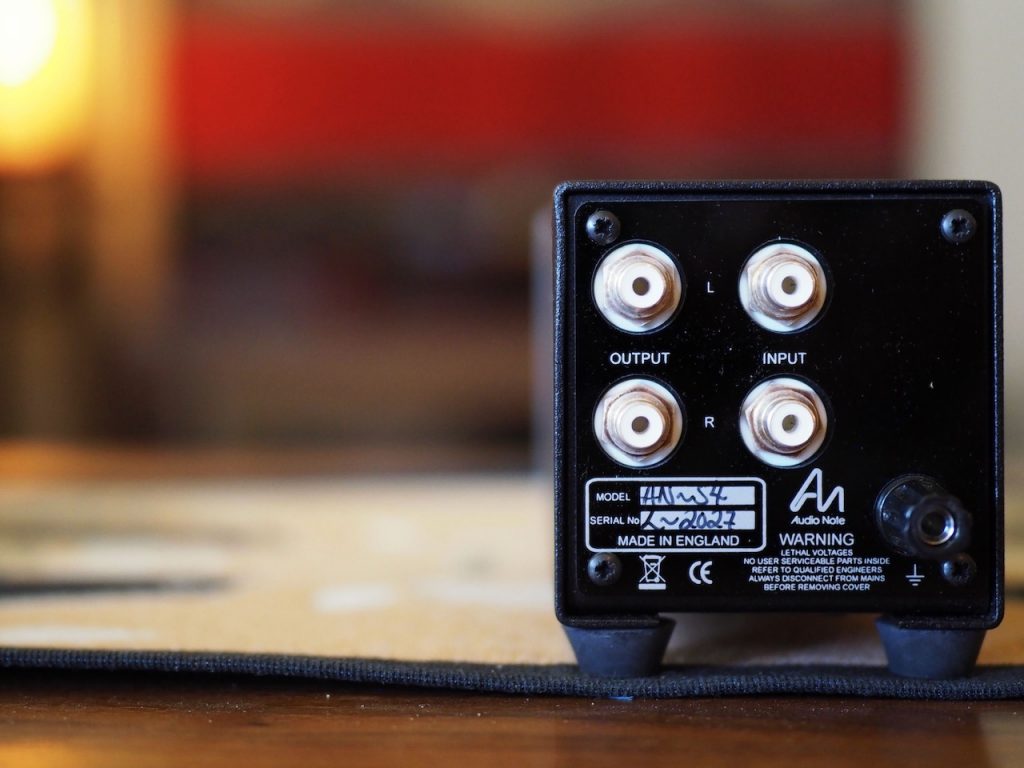
Audio Note (UK) AN-S4 step-up transformer.
The way the AN-S4L works is that the AC current from the Io I phono cartridge induces a magnetic field in the interleaved 0.1mm laminated super mumetal 250 core of the transformer. The magnetic field created by the AC current in the primary windings generates flux in the core, which the secondary windings converts back into current flow to produce the stepped-up voltage at the phono preamplifier. The degree of step-up in voltage is based on the ratio of primary to secondary windings.
Audio Note (UK) AN-V Level Three Silver Interconnects ($918.26 USD for a 1 meter interconnect, each additional meter is $777.66)
The Audio Note (UK) AN-V silver interconnects are at the second level of the silver interconnects product line, and are at Level Three in the Audio Note (UK) performance hierarchy.
The AN-V silver interconnect is intended for use as part of an analogue stereo signal path (as with the AN-S4 step-up transformer per this article), or as a digital interconnect between a transport and DAC, or as I also used them, as stereo interconnects for the Audio Note (UK) CD 2.1x/II Level Two Red Book CD player.
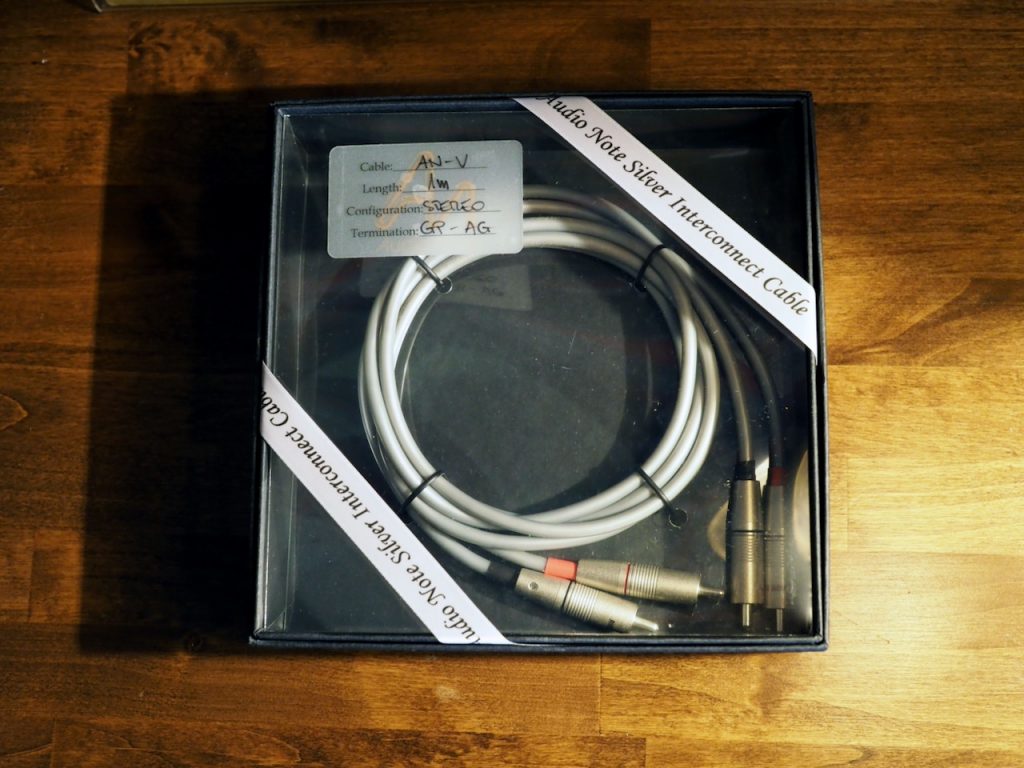
Audio Note (UK) AN-V silver interconnects.
The AN-V silver interconnects are constructed with a 19 strand count of silver conductors, in a twisted pair construction, within a PVC sleeve.
The AN-V silver interconnects are built to order, and are available in a variety of lengths and termination options to meet your preferences.
Audio Note (UK) AN-SPe Level Four Silver Loudspeaker Cables ($2,471.76 USD for a 1.5 meter pair of single-wire speaker cables)
Audio Note (UK) builds all loudspeaker cable sets to order per the customers preferred length, conductor material (copper or silver), terminations (bare wire or banana or spade connectors), and configuration (single or bi-wire sets).
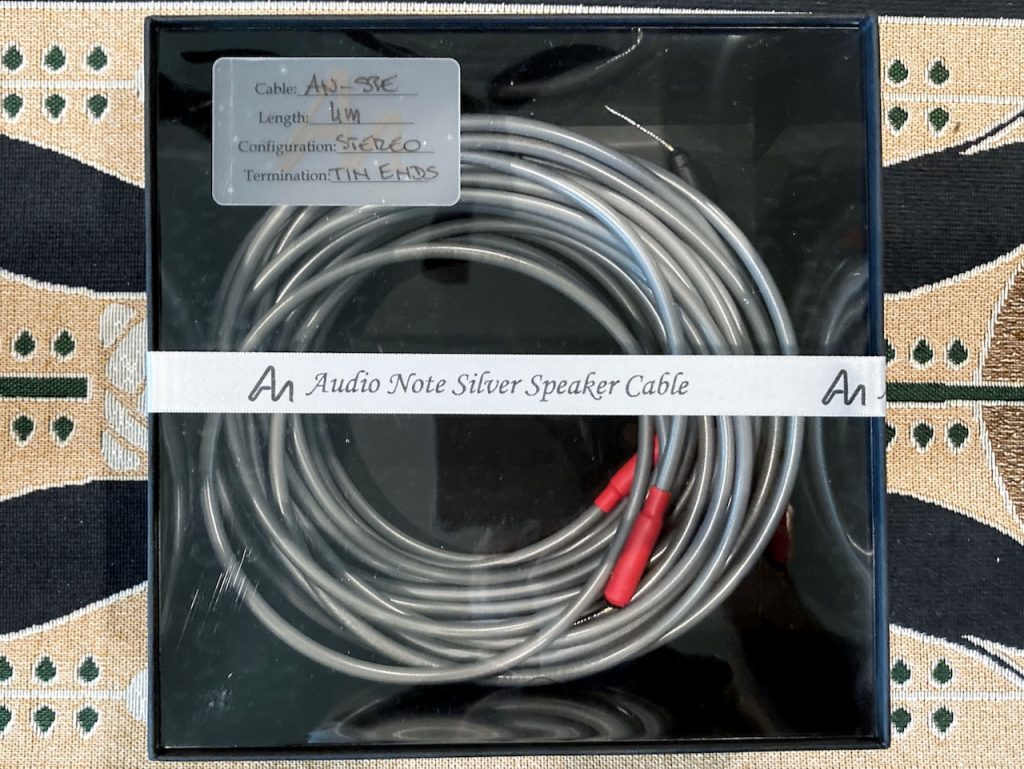
Audio Note (UK) AN-SPe silver loudspeaker cables.
While Audio Note (UK) offers product lines of both copper and silver cables for their customers, the AN-SPe loudspeaker cables I am writing about come from their product line of silver loudspeaker cables, and are a Level Four product in the Audio Note (UK) performance hierarchy.
Audio Note (UK) AN-SPe silver loudspeaker cables utilize 19 strand silver Litz conductors, which are custom drawn to their specific gauge requirements, and are then coated in a variety of dielectric polymers depending on the application the particular cable was designed for. The coated Litz conductors are wrapped in a silver colored PVC sleeve to keep everything together.
Note: The Audio Note (UK) AN-SPe speaker cables cost $389.88 per 1-meter mono piece, single wired termination costs $132.46. The shortest length of AN-SPe speaker cables that are available is 1.5 meters.
Review System
For this article I used my pair of Tannoy Westminster Royal Special Edition loudspeakers (HERE), which feature custom crossovers built from Frederik Carøe’s Duelund Coherent Audio CAST capacitors, inductors, and resistors, that elevated their performance rather dramatically over the stock crossovers.
As Tannoy Westminster Royal SE loudspeakers owners' will tell you, the high-frequency horn of the 15-inch dual concentric driver is extremely revealing, which is at least part of the reason why they are used by a number of electronics designers for evaluating their amplifier designs (e.g. Nelson Pass and Wayne Colburn of First Watt / Pass Labs fame both use Tannoy 15-inch dual concentric drivers in custom cabinets as part of their process for evaluating new electronics designs).
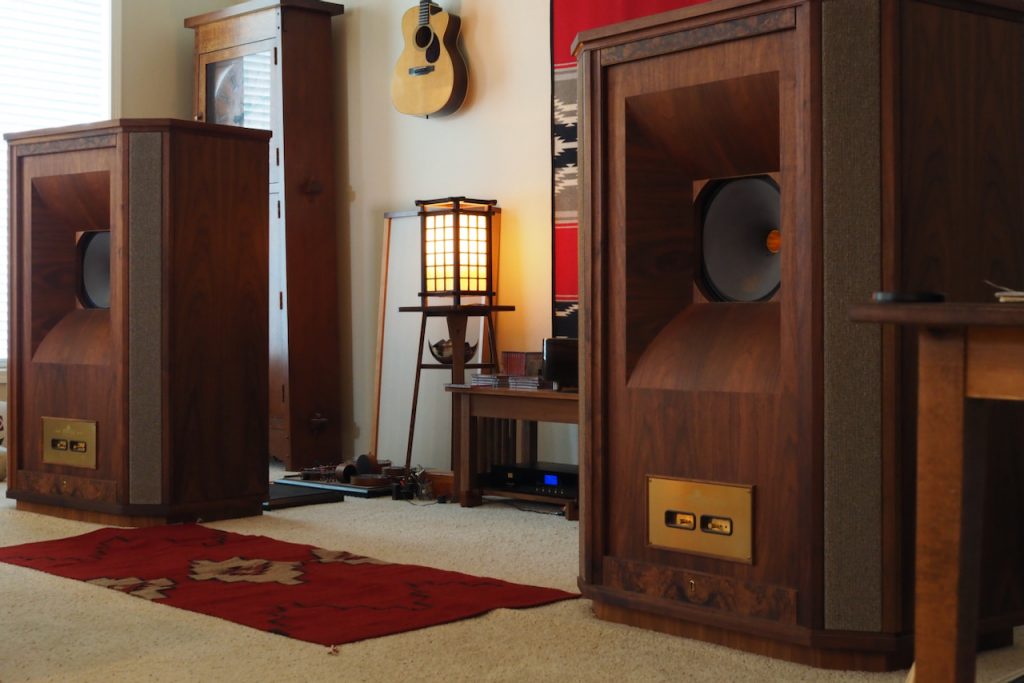
Tannoy Westminster Royal SE loudspeakers with Duelund CAST crossovers.
I might also add that the Duelund CAST crossovers (below) of my Westminsters use pure silver Duelund CAST PIO capacitors in the high-frequency circuit, which are extremely revealing, giving a very clear view into upstream components' performance.
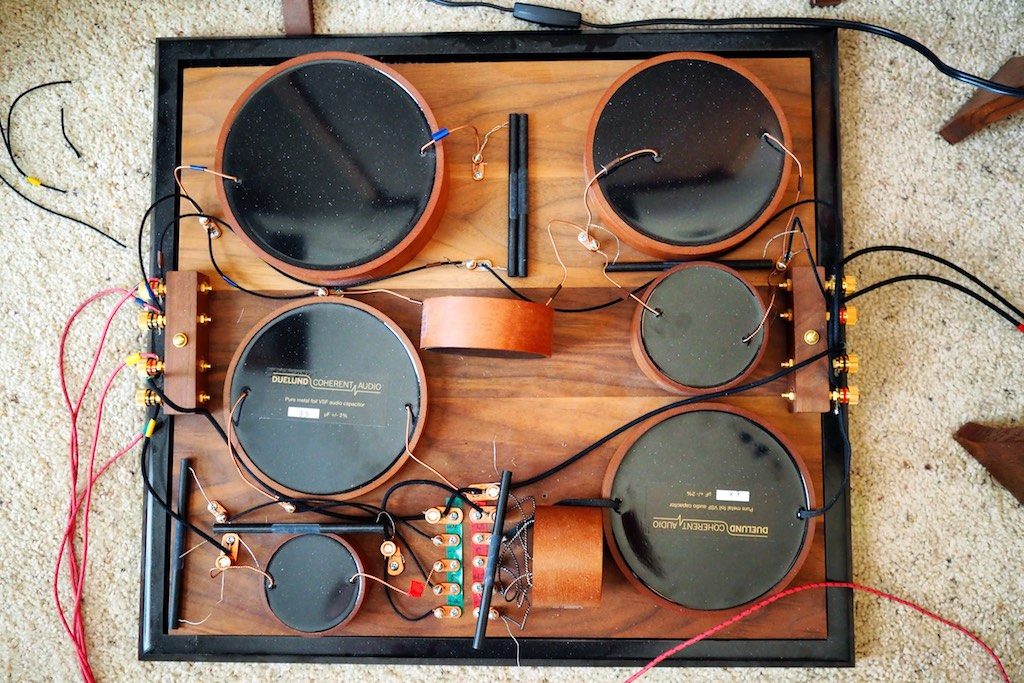
Duelund CAST crossover for Tannoy Westminster loudspeaker.
I have found all of the Audio Note (UK) components to be excellent matches to my Tannoy Westminster Royal Special Edition loudspeakers during longterm listening sessions.
Listening Impressions
This article was more complex to write than usual, given I’m writing about multiple Audio Note (UK) components, and addressing my experiences with several Audio Note (UK) performance philosophies.
I’ll be discussing my listening impressions of Peter’s recommended combination of the Audio Note (UK) Io I MC phono cartridge, the AN-S4 step-up transformer, and the AN-V silver interconnects as an Audio Note (UK) high-performance analog source.
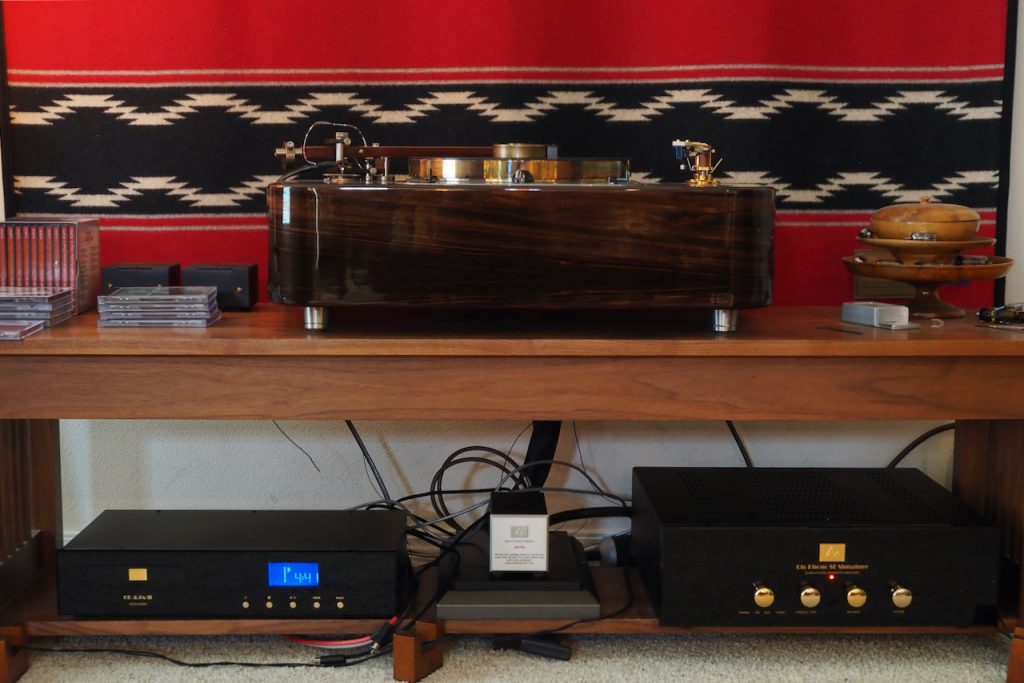
Audio Note (UK) system components.
Adding these three components as an Audio Note (UK) analog source to the combination of Audio Note (UK) Oto Phono SE Signature integrated amplifier and Audio Note (UK) CD 2.1x/II Red Book CD player that I’ve been listening to also provides an opportunity for me to comment about my listening experiences related to the Audio Note (UK) design philosophy of the ‘complete system design synergy’ that results from building a system of all - or nearly all in this case - Audio Note (UK) components.
The Audio Note (UK) design philosophy says that overall system performance is enhanced more than one would expect from the sum of the performance of the individual components, due to each component being designed and voiced to synergistically to elevate overall system performance as more Audio Note (UK) components are added into an audio system.
In my case, adding in the analog source components creates a ‘near full system experience’ with Audio Note (UK) components, with the exception of loudspeakers and turntable, as I’ll be utilizing my Tannoy Westminster Royale SE loudspeakers and my Classic Turntable Company hot-rodded Garrard 301 turntable for this article.
I’ll also be addressing my listening impressions of the Audio Note (UK) ‘Level System’ for speaker cables and interconnects.
The Audio Note (UK) components are designed and voiced such that the Audio Note (UK) AN-V silver interconnects and AN-SPe silver loudspeaker cables represent a performance upgrade path over copper interconnects and loudspeaker cables.
I don’t have any Audio Note (UK) copper interconnects or speaker cables here to compare with directly, so my usual Duelund DCA16GA tinned-copper interconnects and speaker cables were pressed into service as comparators.
For the Audio Note (UK) AN-S4 step-up transformer I’ll also compare its recommended match of Audio Note (UK) AN-V silver interconnects to the shielded Belden 8402 tinned-copper microphone cable interconnects that I normally use to get an idea of the magnitude of performance upgrade that the Audio Note (UK) AN-V silver interconnects are intended to be.
Finally, I want to discuss how having both Audio Note (UK) digital and analog sources enhanced my exploration and appreciation of recorded music from all of the recording eras of our recorded music canon: the acoustic (1877-1925), the electric (1925-1945), the magnetic (1945-1977), and the digital (1977-now) eras.
Ok, with those preliminaries stated up front, let me start by discussing my listening impressions of Peter’s recommended combination of the Audio Note (UK) Io I MC phono cartridge, AN-S4 step-up transformer, and AN-V silver interconnects.
Ok, that's it for now. You will be able to read the full feature article at Positive Feedback in the very near future.
I would like to thank Peter Qvortrup of Audio Note (UK) for providing his Audio Note (UK) components for me to listen to and write about for you, and sharing with me his vision for audio and music, as it has been a truly illuminating experience. Thank you, Peter!
As always, thanks for stopping by, and may the tone be with you!



























